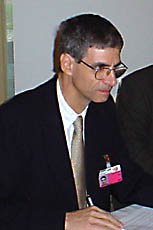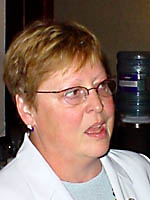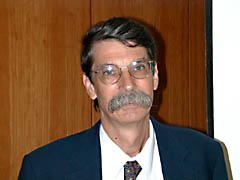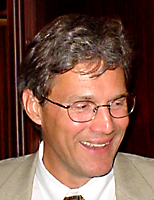|
|
|||||||||||||||||||||||||||||
|
|||||||||||||||||||||||||||||
|
Events convened on Thursday-Saturday, 6-8 June |
|
Article 6 - Education, training and public awareness: Developing a SBSTA
work programme
Presented by the UNFCCC Secretariat
Jean-Pascal van Ypersele, Belgium, explained that the workshop had focused on scoping activities to be considered under Article 6, defining operational objectives of the work programme, and addressing the financial needs for its implementation. The workshop adopted a five-year work programme aimed at: promoting implementation of Article 6; assisting Parties in the implementation of programmes and development of national strategies; promoting and facilitating the exchange of information and material; and enhancing cooperation and coordination of activities at the international and regional levels. Possible short-term priorities noted by workshop participants included identifying financial resources, facilitating exchange of information, and disseminating information generated by the Intergovernmental Panel on Climate Change (IPCC). Long-term priorities were also identified, including: improving reporting on Article 6 activities in national communications; developing capacity to assess the effectiveness of Article 6 activities; developing curricula to encourage consideration of climate change at all educational levels; and promoting cooperation between the UNFCCC and intergovernmental organizations, as well as between Annex I and non-Annex I Parties. Janos Pasztor, UNFCCC Secretariat, underscored that the work programme is focused and measurable, and stated that non-governmental and intergovernmental organizations would be consulted to discuss their involvement in the work programme. Discussion: Participants identified the late announcement of workshops as well as the lack of human and financial resources as problems needing to be addressed to facilitate NGO participation. Participants also discussed the effects of copyright regulations and the availability of material in a limited number of languages in hindering the implementation of Article 6.
|
|
Good Practice Guidance for LULUCF Presented by the Intergovernmental Panel on Climate Change (IPCC)
Jim Penman, IPCC, introduced Chapter 2 of the GPG, on consistent representation of land areas. He explained that it identifies six broad categories of land, devises a system for relating these categories to those established by the 1996 Guidelines, and identifies four basic approaches for representing land areas. Penman noted that areas of Chapter 2 currently under development take into account the relationship between different data sources, sampling strategies, and the relationship between sampling and carbon dynamics. Gert-Jan Nabuurs, IPCC, introduced Chapter 3 on LULUCF sector good practice guidance, which provides national guidelines for managed lands. He noted that the national reporting system provides, inter alia, guidance on measuring and estimating changes in carbon stock of above- and below-ground biomass, litter, deadwood, and soil organic matter. Nabuurs highlighted the need to address duplication, gaps in information, and harmonization between sections of the Guidelines. Bernhard Schlamadinger, IPCC, introduced Chapter 4 on supplementary methods and good practice guidance arising from the Kyoto Protocol. The chapter adopts a two-step approach, identifying lands on which LULUCF activities occur and then establishing estimates of stock changes on these lands. He stated that methods for identifying afforested and reforested lands include a reporting-based approach, an inventory-based approach, and monitoring of afforestation and reforestation, and outlined strategies for accounting for forest management as well as for identifying afforested and reforested land. Newton Paciornik, IPCC, introduced Chapter 5 on cross-cutting issues, which include methodological choices and recalculations, quality assurance and quality control, and verification. He noted the importance of transparency, the need to distinguish between UNFCCC and Kyoto Protocol issues, and the need for further methodological clarification.
|
|
Medical uses of hydrofluorocarbons: Discussion of medical, technical and policy aspects Presented by the European Federation of Asthma and Allergy Association
Edith Rameckers, European Federation of Allergy and Airway Disease Patients' Association (EFA), stated that patients' concerns include optimal treatment, available medication devises, and good air quality. Noting that inhalers are indispensable to the adequate treatment of asthmatic and allergic lung diseases, and that the global warming potential of hydrofluorocarbons (HFCs) is smaller than that of chlorofluorocarbons (CFCs), she underscored that efforts should be made to produce and approve HFC inhalers. Pamela Wexler, US Stakeholders Group on Metered Dose Inhalers (MDIs) Transition, highlighted links between the Montreal Protocol and the UNFCCC, and underscored the importance of considering how policies on CFCs and HFCs, such as labeling requirements, might impact patient use of and access to MDIs. She also noted that the transition to HFC propellants has been technically challenging and costly, and questioned the feasibility of considering an HFC phase-out. Claudine Steyaert, International Pharmaceutical Aerosol Consortium, explained that it took five years to develop an HFC propellant, and that a global transition from CFC to HFC MDIs is expected to be complete by 2010. She underscored that a successful transition will depend, inter alia, on proactive government initiatives and funding for the development of national strategies in developing countries. She also noted that MDI emissions in 2010 are projected to represent 0.02-0.05% of all greenhouse gas (GHG) emissions.
|
|
Greenhouse gas emissions from dams Presented by the International Rivers Network
Philip Fearnside, National Institute for Research in the Amazon, said that the Tucuruí Dam, which spans 2,430 km2, is the second largest water reservoir in the Brazilian Amazon. Sources of GHG emissions from the dam include above-water decay of flooded forests, bubbling, diffusion, turbines, and spillways. He explained that bubbling and diffusion account for 5-8% of the dam's total GHG emissions, whereas turbines and spillways account for 13-40% and for 30-44%, respectively. He stated that methane emissions contribute to 64-75% of the dam's total GHG emissions, with 0.5 million tons emitted from spillways and 0.8 million tons from turbines. Fearnside also noted that carbon dioxide (CO2) accounts for 26-38% of the dam's total GHG emissions, amounting to a total of 7-10 million tons of CO2 equivalent per year, or more than the annual GHG emissions of the city of São Paolo. Fearnside said that the delay between the GHG emissions generated when building dams and the energy gained from them may have implications for the calculation of the environmental impacts of GHG emissions over time. He also underscored the importance of examining dams located in a given basin area collectively, as the assessment of individual dams may not disclose, for example, the reliance of small dams eligible for CDM projects on the water supply held by larger and more environmentally-unfriendly dams.
|
|
Public participation in the CDM: Next steps in broadening opportunities for CDM success and overcoming barriers to access to information and justice Presented by Greenpeace International
Nathalie Eddy, Greenpeace International, highlighted major weaknesses in public participation provisions in the CDM, including: lack of notification and untimely availability of information; inadequate consideration of appropriate ways of disseminating information to local and indigenous communities; short comment periods during project validation; lack of notification of the comment period; and lack of access to judicial remedies. To strengthen public participation in the CDM, Eddy suggested that the Executive Board: adopt public participation as a standing item on its agenda; include in its workplan culturally appropriate means of communicating information to local stakeholders; make provisions for environmental impact assessment mandatory; adopt procedures for the involvement of stakeholders in the review process; and formalize the NGO accreditation process. Johnson Cerda, Amazon Alliance of Indigenous and Traditional Peoples of the Amazon Basin, stated that many indigenous and local communities cannot access information available only on the internet or published only in English, and underscored that the short timeframe of the CDM comment period would prevent many indigenous peoples' organizations from submitting their suggestions. He highlighted the importance of ensuring full and informed participation of communities involved, and defining projects' socioeconomic and cultural objectives for those communities. Discussion: Participants discussed ways of encouraging the participation of local communities, especially in developing countries and countries with economies in transition. It was agreed that the extent of public participation will largely be determined by efforts made at the national rather than at the international level.
|
|
|
|
| The Earth Negotiations Bulletin (ENB) on the side is a special publication of the International Institute for Sustainable Development (IISD) in cooperation with the United Nations Framework Convention on Climate Change (UNFCCC) Secretariat. This issue has been written by Dagmar Lohan dagmar@iisd.org and Kira Schmidt kira@iisd.org. The Digital Editors are David Fernau david@iisd.org, Andrei Henry andrei@iisd.org, Leila Mead leila@iisd.org and Diego Noguera diego@iisd.org. Funding for publication of ENB on the side at UNFCCC SB-16 is provided by the UNFCCC Secretariat. The opinions expressed in ENB on the side are those of the authors and do not necessarily reflect the views of IISD and funders. Excerpts from ENB on the side may be used in non-commercial publications only and only with appropriate academic citation. For permission to use this material in commercial publications, contact the Managing Editor at kimo@iisd.org. Electronic versions of issues of ENB on the side from UNFCCC SB-16 can be found on the Linkages website at http://enb.iisd.org/climate/sb16/enbots/. | |
|
|
| © 2002, IISD. All rights reserved. |
|








